| |
More M&M magic in the Mediterranean
By Tom Adkinson
May 20, 2022
Peeks into Mallorca and Menorca, places likely new to you
(Part 3 in a 4-part series)
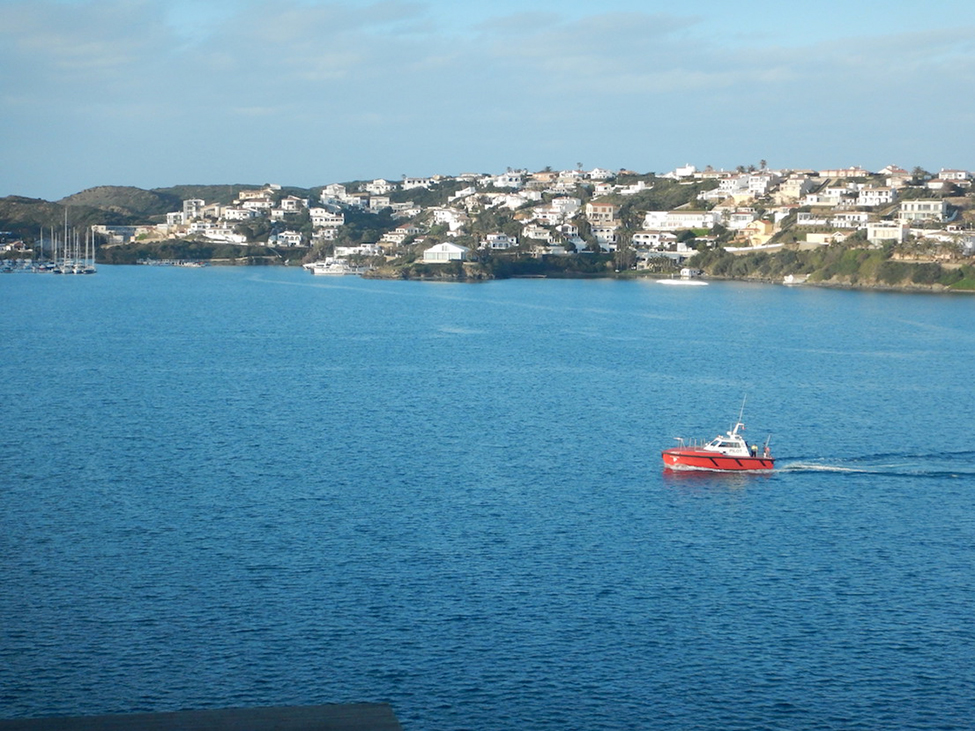
A pilot boat moves through the harbor at Mahon, beyond which streets of white houses climb the hillside. Image by Tom Adkinson |
Asked to name islands in the Mediterranean Sea, many people may start to run dry after Sicily (Don Corleone), Elba (Napoleon) and maybe Malta (Humphrey Bogart and that famous falcon). Others – the fortunate ones – would add Mallorca and Menorca from personal experience.
Those two Spanish islands in the western Mediterranean are long popular with European vacationers, but relatively few Americans have enjoyed the many pleasures and treasures they offer. Let’s take a look at Menorca.
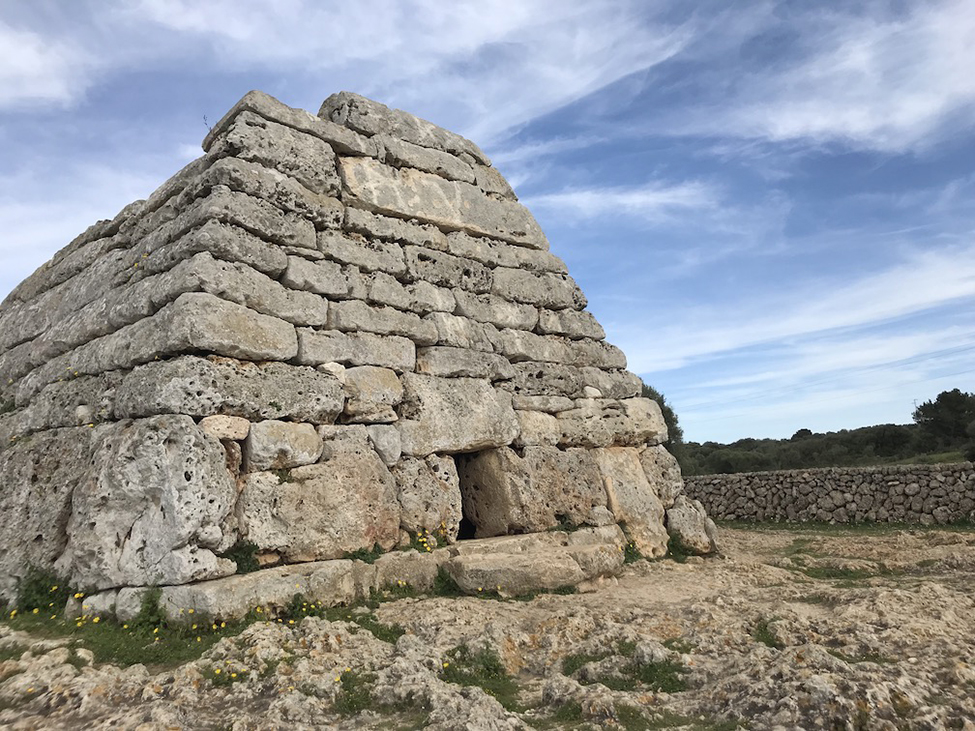
The dry-stacked quarried stones of the Naveta de Tudons are a lasting testimony to a people who occupied Menorca 3,000 years ago. Image by Tom Adkinson |
MENORCA
Menorca is small and not very populous. It covers only 260 square miles, half the size of Nashville, Tennessee, and only about 95,000 residents enjoy its abundant sunshine. That’s 600,000 people fewer than Nashville. Annual tourist visitation is about 1.5 million.
Despite its size, Menorca has excellent air service to multiple European cities, plus nature’s blessings of white-sand beaches, coves of azure water, towns and villages with cafes and cobblestone streets, historic buildings and a local gastronomical heritage that makes traveling here worthwhile all by itself. There’s even a connection with America’s most popular condiment – mayonnaise.
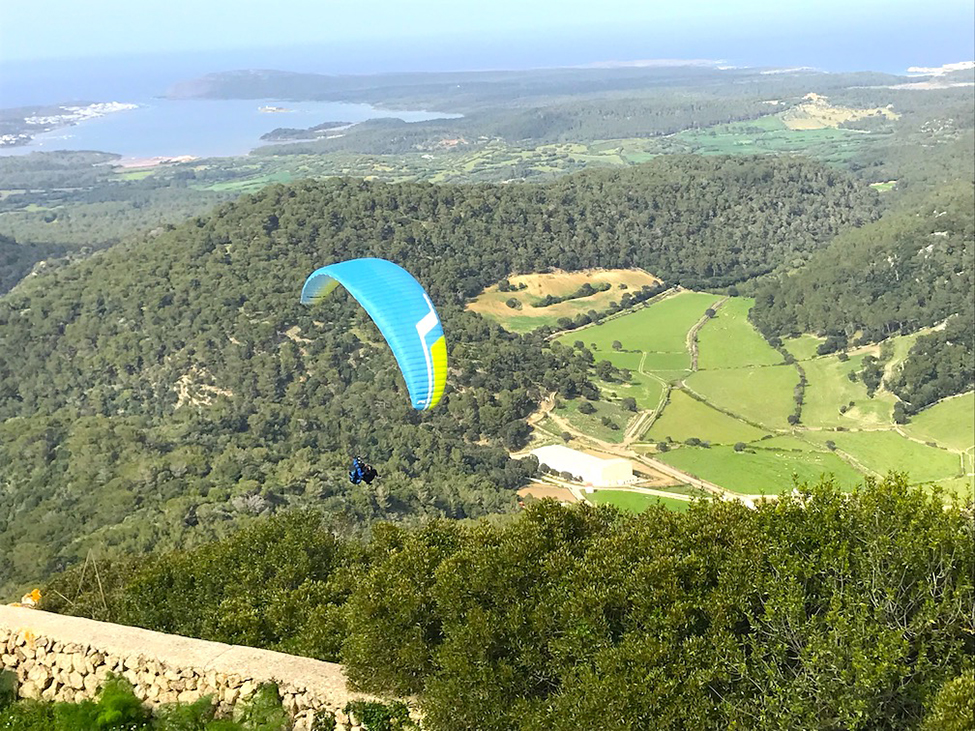
Paragliders lifted by the wind rushing up Monte Toro get especially sweeping views of Menorca. Image by Tom Adkinson |
Mahón, the capital, is on the eastern side of the island overlooking one of the largest natural harbors in the world (almost 4 miles long). Conquering and colonizing powers have coveted the port for centuries (Greeks, Romans, Vandals, Arabs, Turks, British, French and Spanish among them), which today is populated by fishermen, pleasure boaters, kiteboarders and windsurfers. Ferries to the mainland and small to medium-sized cruise ships add to the waterfront bustle.
Across the harbor is an imposing complex of buildings built from 1793-1807 as a quarantine station for ships’ crews and passengers suspected of carrying infectious diseases. (Sound familiar to today’s world?) One of the architectural oddities is a curved structure with bars on the inside of the curve through which people who were quarantined could see and hear – but not touch – a visiting priest.
Across the island is the town of Ciutadella, itself once the capital, and now an appealing place of medieval buildings, monuments and palm trees. If you stand in the main plaza, you can see a Moorish-influenced building in front of you and turn around to see a Gothic structure. The whole island is an interesting mix of cultures.
Every June, Ciutadella stages one of Menorca’s most famous events, the Festival of Sant Joan. Skillful riders maneuver handsome horses through the streets, and as the island’s official tourism literature notes, “Passing among the expectant crowd, the horses rear up on their hind legs as a symbol of power and nobility.”
What happens then makes risk-averse spectators cringe: Daring souls dart under the horses’ front legs to try to “touch the heart of the horse” for good luck. (Shades of Pamplona’s running of the bulls.)
Down the southern coast is a place where ancient geology and modern entertainment collide.
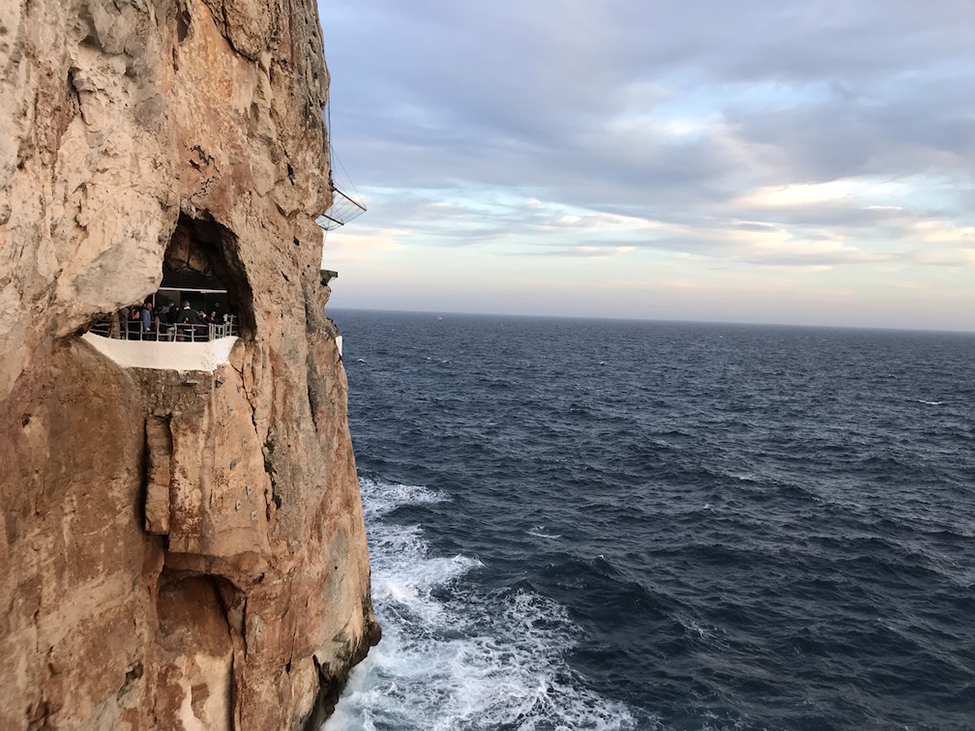
Multiple overlooks to the Mediterranean Sea are features of the Cova d’en Xoroi, along with various bars, a DJ and dancing. Image by Tom Adkinson |
It is Cova d’en Xoroi, a cave system woven into a towering sea cliff that has been transformed into a place to enjoy panoramic sea views by day, witness spectacular sunsets in the evening and then dance and socialize deep into the night. Yes, the cave is a combination nightclub and observation platform.
Just as the Cova d’en Xoroi delivers great ocean views, nearby Monte Toro offers panoramas showing you most of Menorca. Monte Toro’s elevation isn’t all that dramatic, but at 1,175 feet above sea level, it’s the highest point on the island. At the top are a small church built about 1670 and a café.
Closer to sea level is the Naveta de Tudons archaeological site. It is a stone structure in use from 1200 to 750 BC as a collective tomb. Massive stones were quarried, transported and assembled without mortar, a prehistoric accomplishment not on the order of Stonehenge, but still amazing. The name, “naveta,” means “little boat” in Catalan (one of Menorca’s official languages) and comes from the fact the structure resembles an overturned boat.
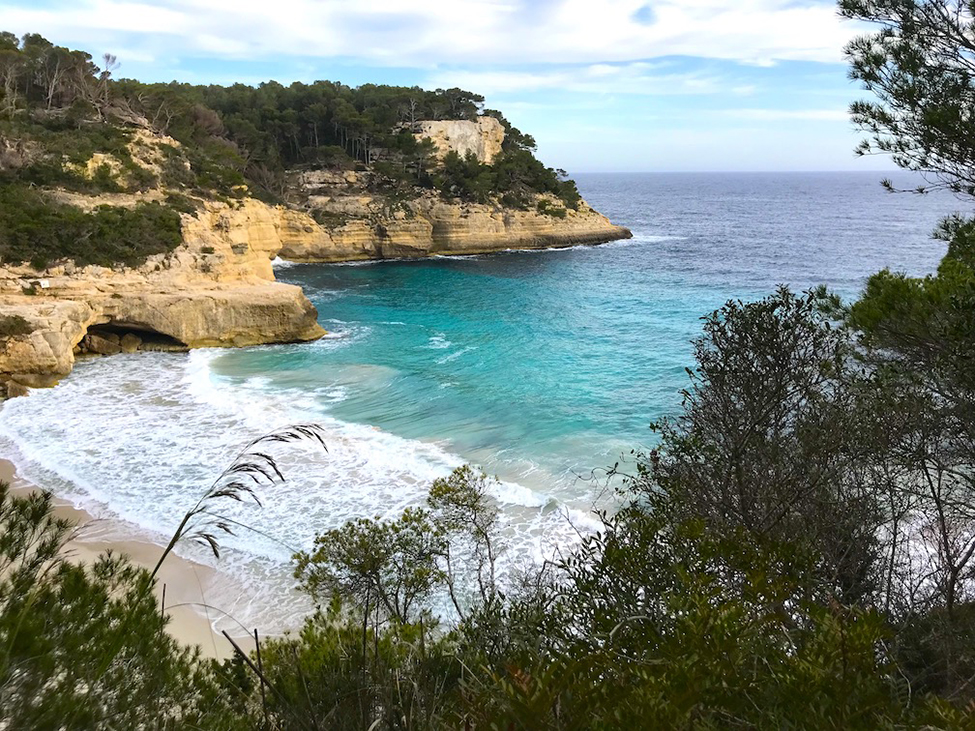
The azure waters of the Mediterranean roll into a quiet cove along a segment of the Cami de Cavalls, a trail that circumnavigates Menorca. Image by Tom Adkinson |
Directly at sea level is Menorca’s greatest natural treasure, the Camí de Cavalls, a 115-mile trail that circumnavigates the island. There are 20 sections of various lengths that take you to hidden coves, ocean overlooks, small communities and the two big towns of Mahón and Cuitadella.
Camí de Cavalls evolved over the centuries for coastal defense and communication and today is a major visitor attraction. Whether you hike one section or several, it opens up Menorca for close inspection. Blogs for walkers say that a swimming suit is as important as water and sunscreen for a stroll on the Camí de Cavalls.
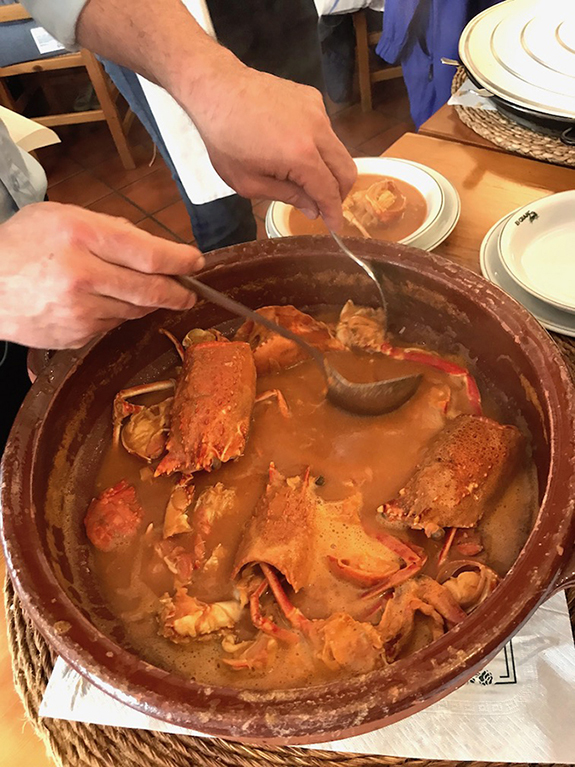
Spiny lobster stew is a common dish in Menorcan restaurants and homes. Image by Tom Adkinson |
Wherever you go on Menorca, expect to eat well, although often simply, and usually in appealing locations. Experiences range from a wine-tasting dinner at the countryside vineyard and resort of Torralbenc, to dining dockside on spiny lobster stew at Es Cranc in Fornells, to an open-air farm breakfast minutes from downtown Mahón.
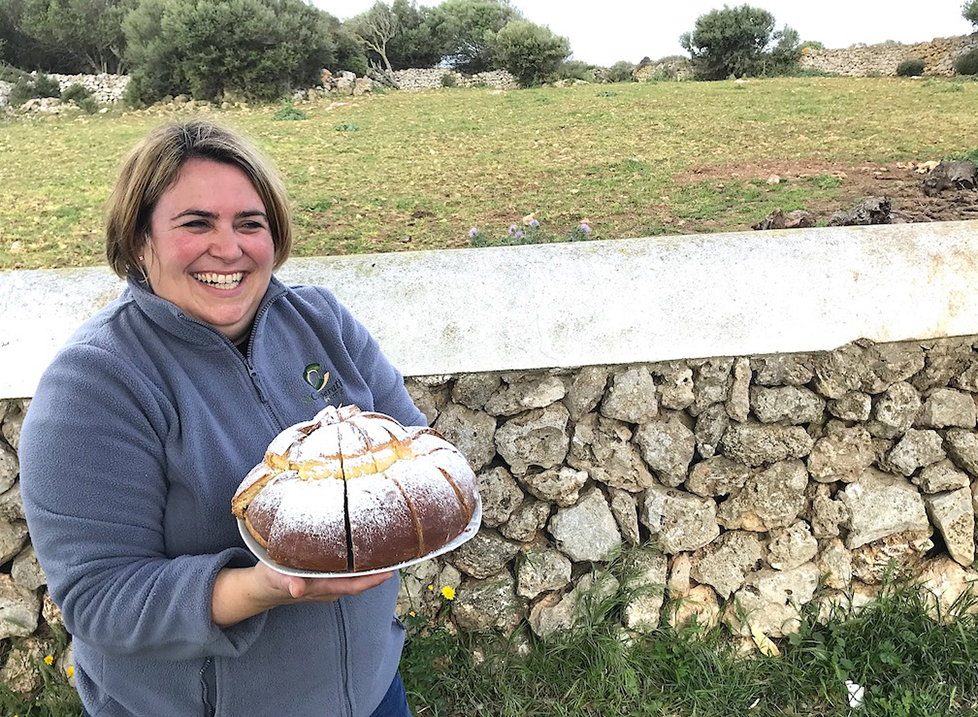
Lupe Pons knew she had guests coming for breakfast at her farm, so she baked a special pastry. Image by Tom Adkinson |
Llucia and Lupe Pons of the Son Piris farm dairy are part of Sa Cooperativa del Camp, a 500-member farmer/brewer/craft cooperative, and they roll out the red carpet for an al fresco breakfast (country breads, pumpkin and melon preserves, cured pork-based meats and Mahón cheese) before showing you their cheese-making facility.
Mahón cheese, a designation just as specific to Menorcans as champagne is to the French, is exported to 50 countries. The U.S. is second only to Spain as a recipient of the distinctive square blocks of cheese with the rounded corners.
And what about mayonnaise mentioned earlier? You will find multiple references saying that after the French invasion of Menorca in 1756, the Duke of Richelieu was introduced to the local condiment made of oil, egg, salt and vinegar. He took the recipe back to France, where it became known as “mahonnaise,” taking its name from the town of Mahón.
Trip-planning resources: Menorca.es and Spain.info
On-island resources: SaCooperativa.com, Torralbenc.com, CovaDenXoroi, EsCranc and Artiem Carlos Hotel
Editor’s note: Part 4 of the series will be a pictorial from Menorca on May 27.
Part 1 of the series was a focus on Mallorca on May 6.
Part 2 of the series was a focus on Mallorca on May 13.
(Travel writer Tom Adkinson’s book, 100 Things To Do in Nashville Before You Die, is available on Amazon.com.
|

